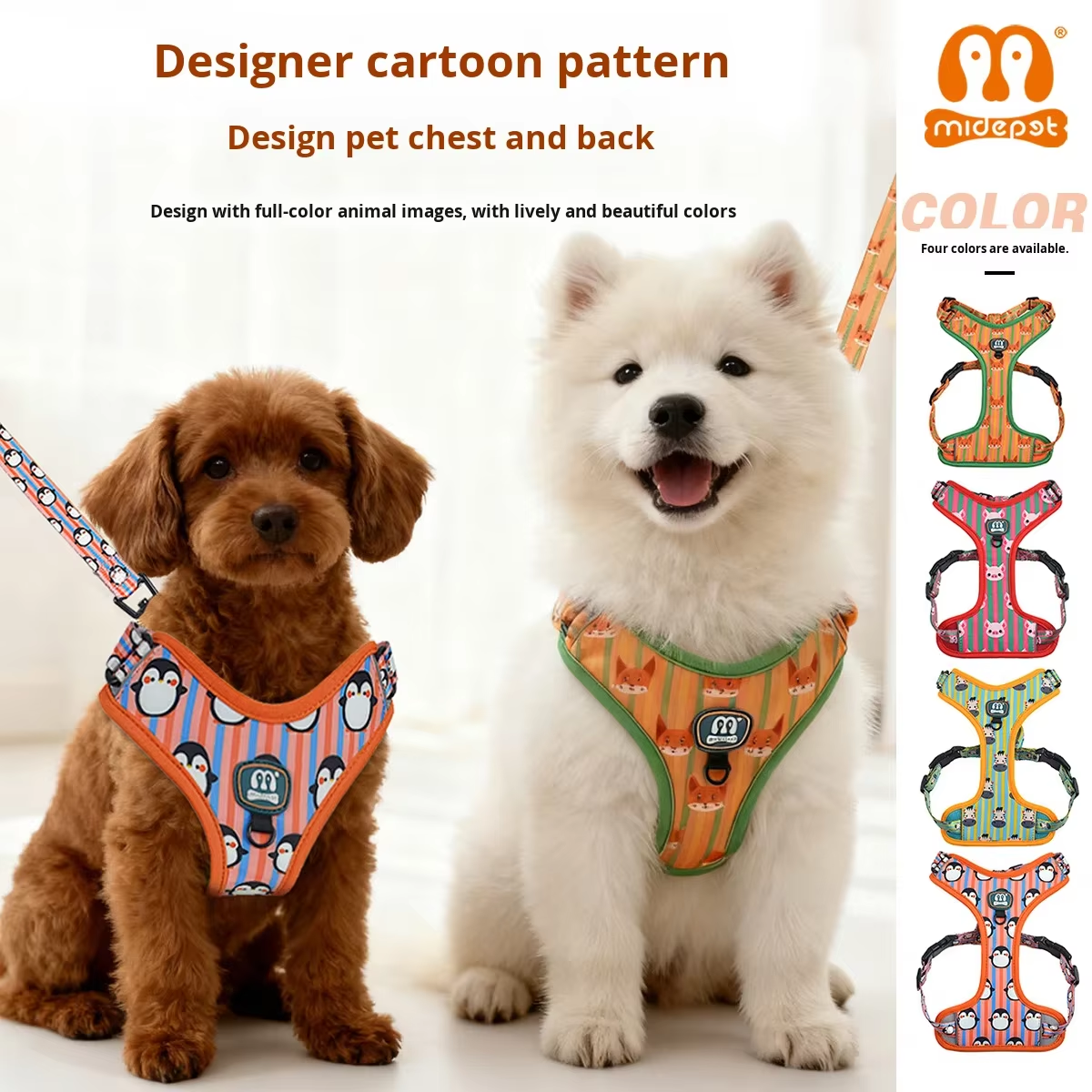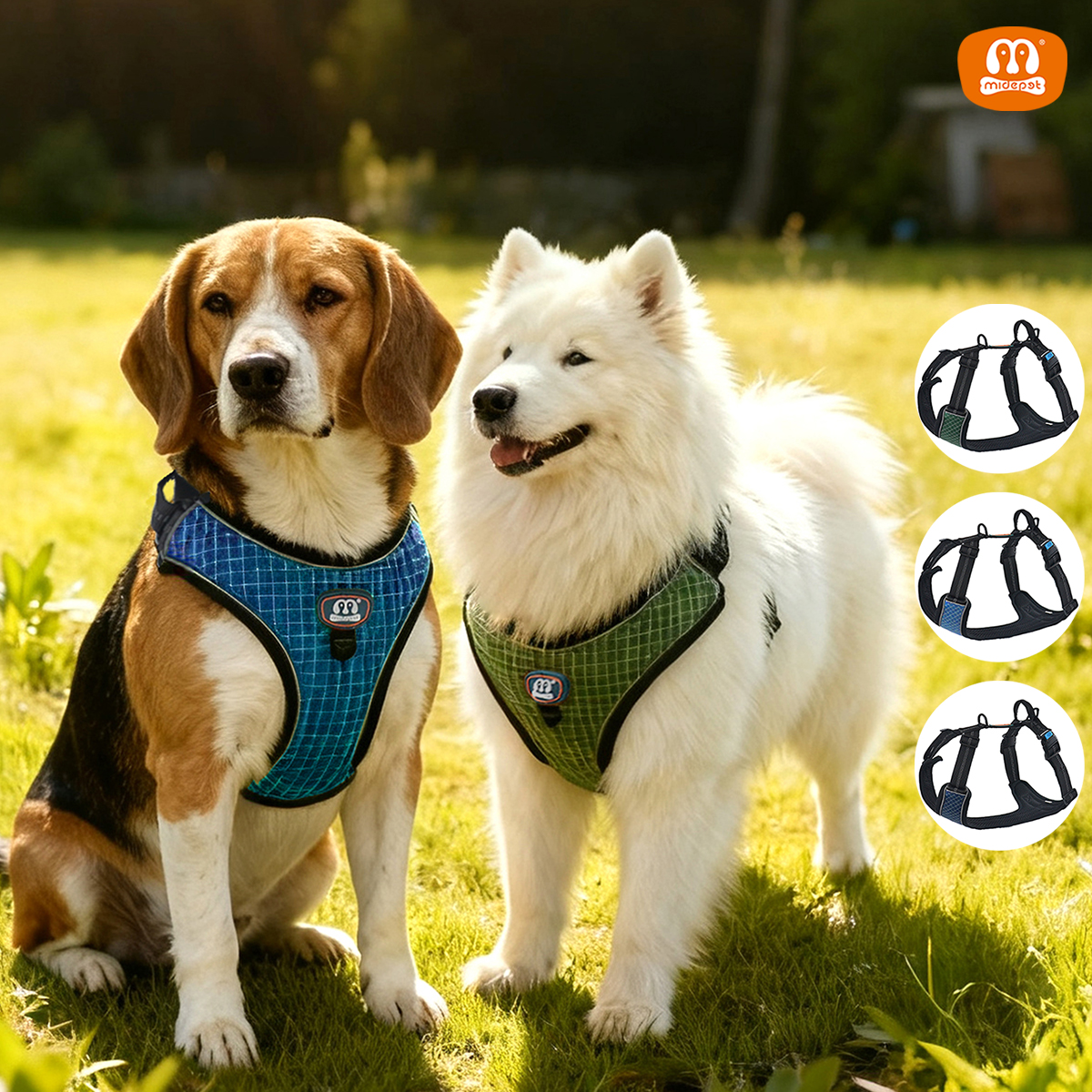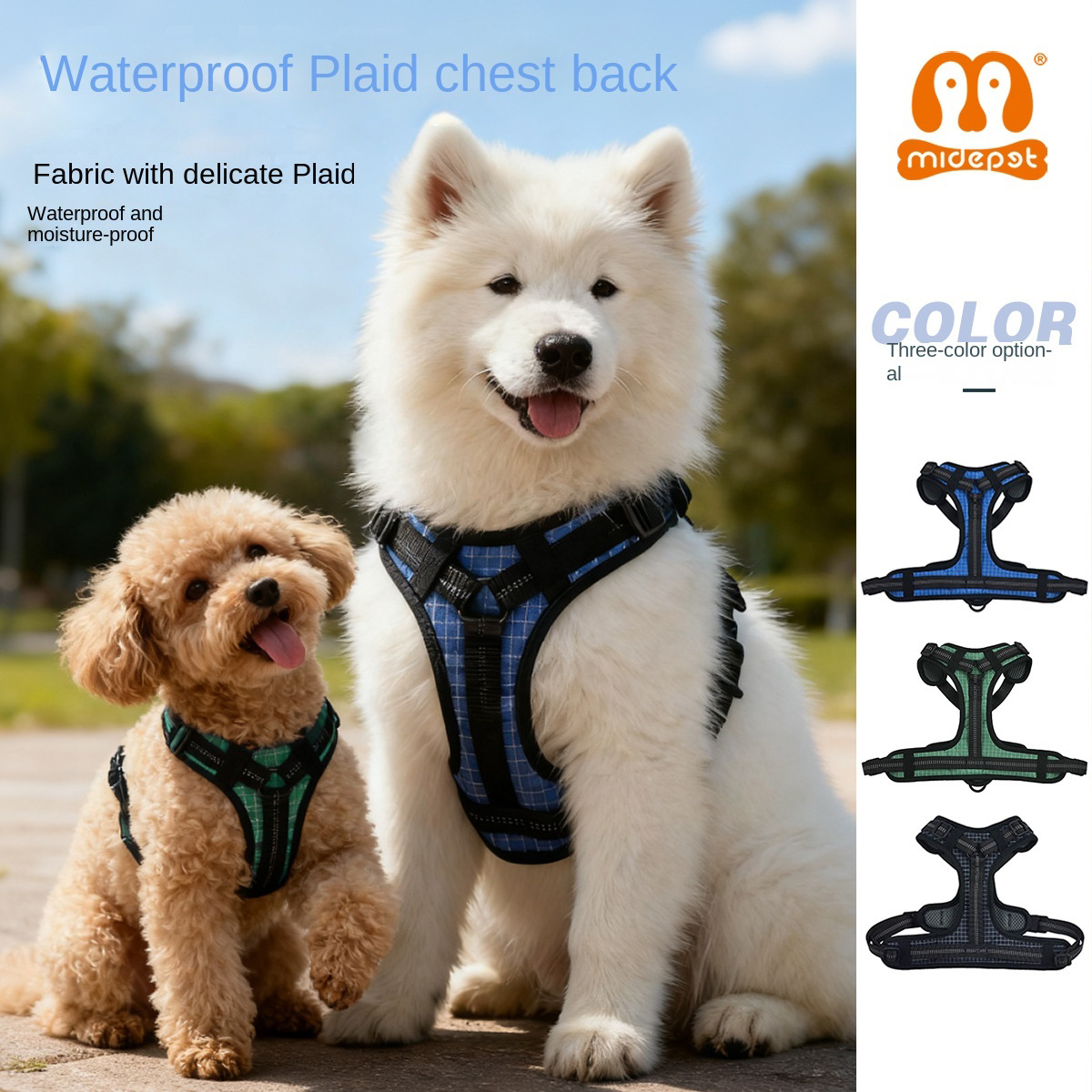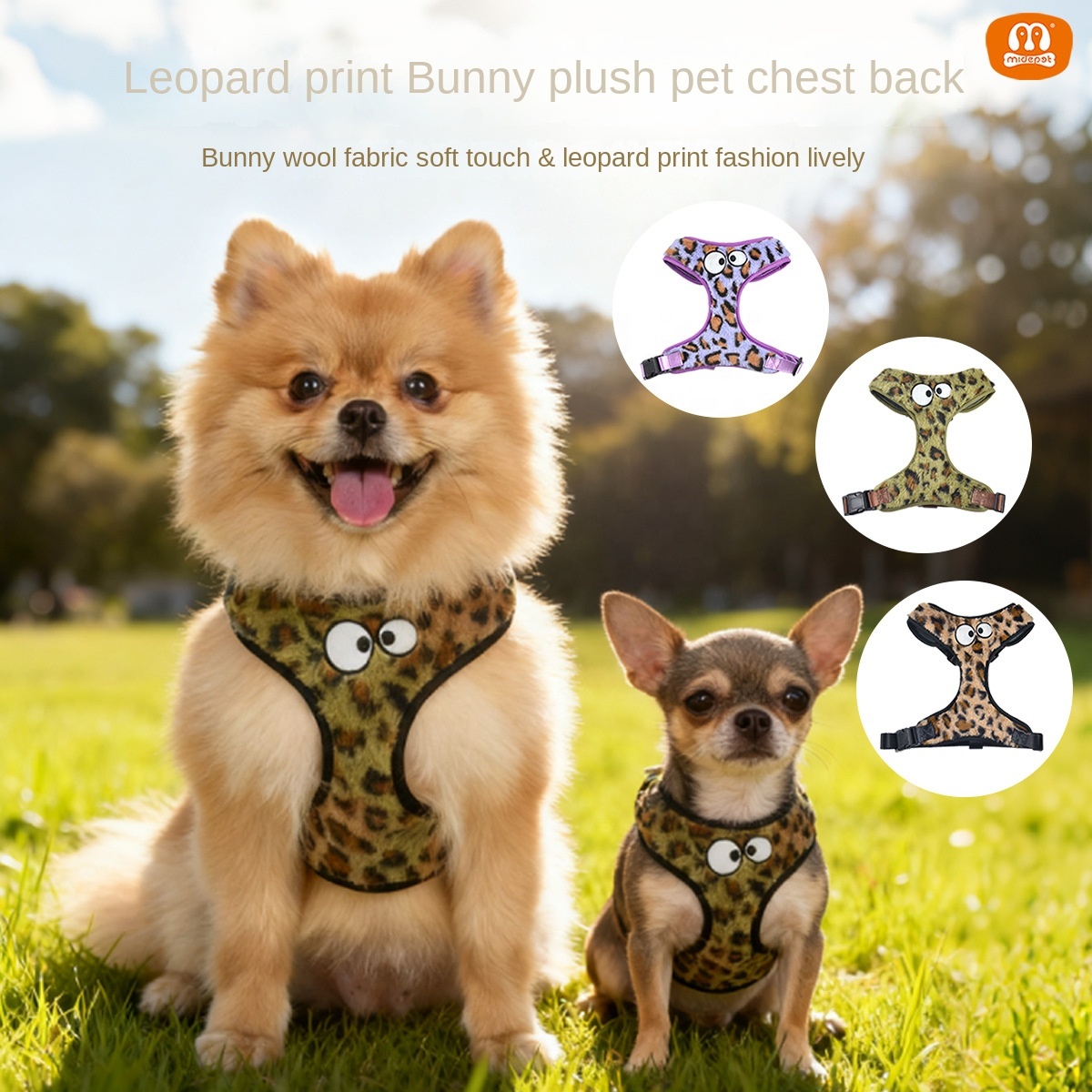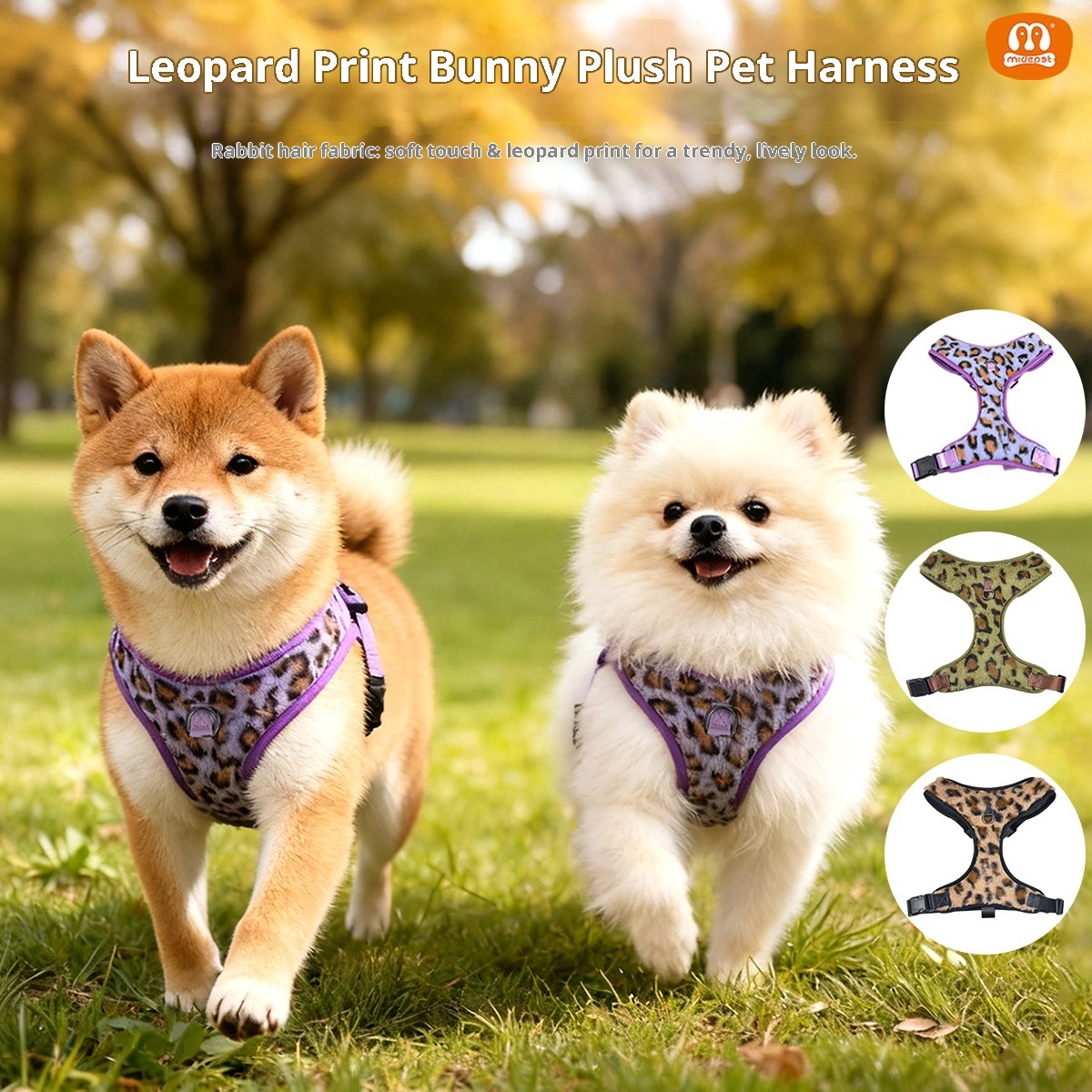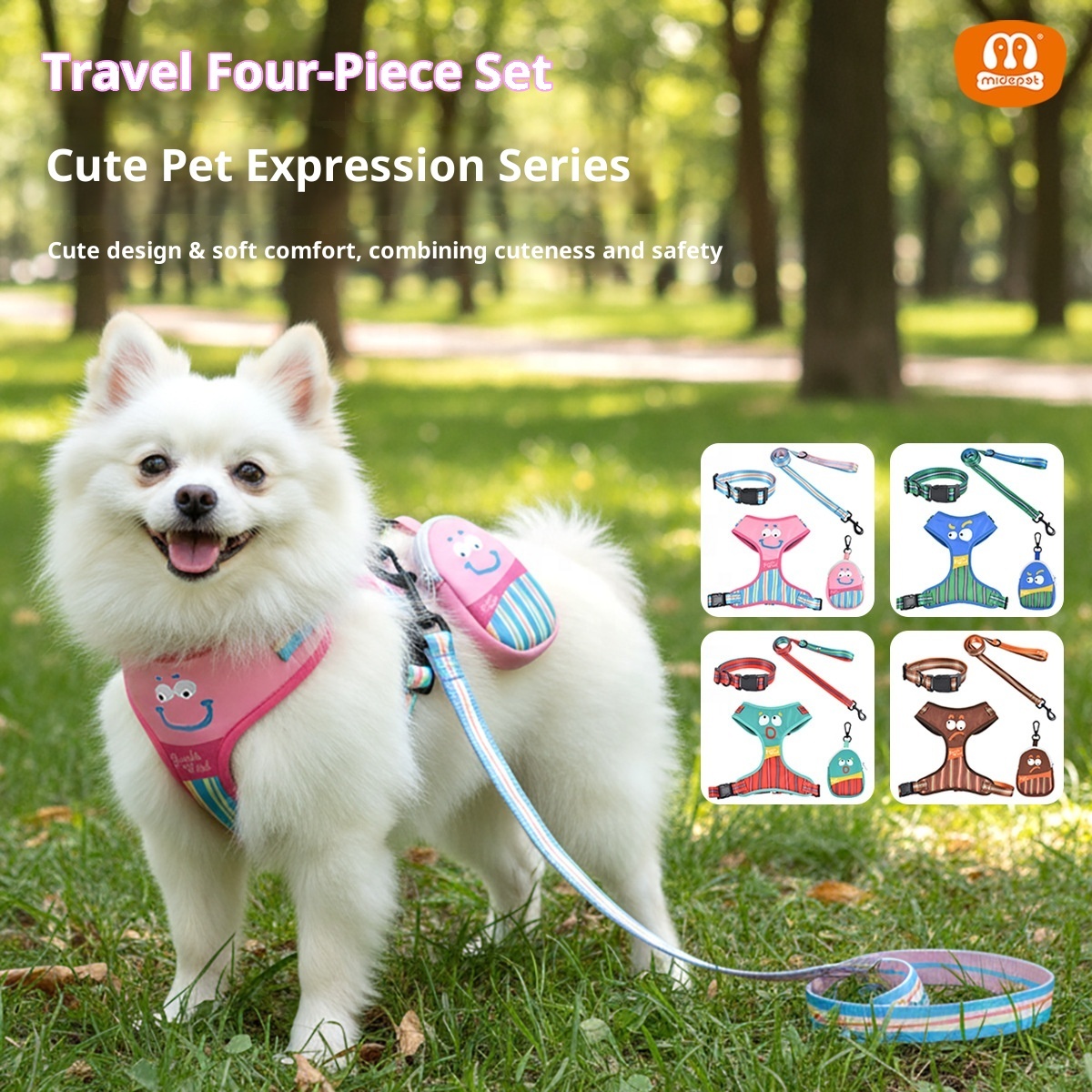As an industry veteran in the pet sector, I'll uncover the secrets of how to scientifically choose a dog harness.
Many dog owners may not necessarily know how to choose a harness that suits their dog. Currently, harnesses on the market are mainly divided into several types: saddle-style, H-shaped, Y-shaped, X-Y-shaped, hexagonal, I-shaped, double-X, functional (for cars, sledding), and vest-style. Different types are suitable for different breeds of dogs, or correspond to different dog morphologies and ages.
For many dogs, especially those with robust body types, it can be difficult for owners to restrain them when they rush towards passersby. Moreover, using a leash on dogs invariably involves a collar or a harness, both of which can cause significant physical and psychological harm to dogs.
For instance, harnesses like the P-leash are more suitable for professional dog trainers and may not be ideal for ordinary people, as improper use can lead to the dog developing a sense of rebellion. Improper pulling can cause harm to the dog, especially for those prone to explosive behavior.

A good harness should primarily meet these key criteria:
1.Unhindered movement of the shoulder blades.
2.Front attachment point situated at the breastbone end, with side straps avoiding chafing under the armpits.
3.The upper traction point should not extend beyond the dog's last rib.
4.Comfortable material that doesn't cause fur abrasion.
5.Consider harnesses with reflective bands for visibility during night walks.
6.Proper fit: neither too loose nor too tight.
Dogs are naturally inclined to be active and love running. Selecting an ill-fitting harness can easily strain their bodies. For example, non-breathable fabrics may be tolerable in autumn and winter, but in the sweltering heat of summer, they can cause overheating and discomfort for dogs.

or instance, in Midepet harness, the interior lining is crafted from breathable mesh. This ensures that the harness remains thick and soft without causing any discomfort to the dog.
Official website:https://www.midepet.com/
When it comes to fabric material selection, if the material isn't sufficiently soft and tends to be stiff, aside from other concerns, after just a couple of days of walking, you'll definitely notice a significant decrease in the dog's fur in areas where the harness contacts.

In summary:
1.Whether it's a harness or a collar, avoid prolonged wearing. Remember to take it off when at home and take the time to brush your dog's fur.
2.For dogs prone to lunging, selecting the correct harness can effectively redirect the force of their lunge, preventing intense pulling that could harm the dog.
Be sure to choose the appropriate harness for your furry companion!


